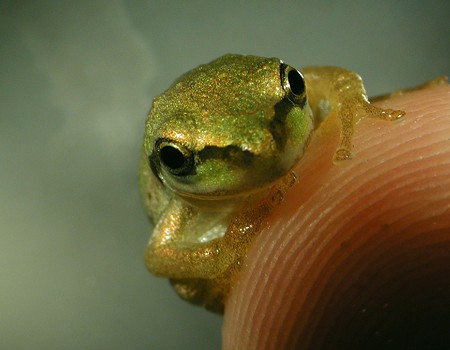I just got a note from Lee Hallagan, class of ’03, this afternoon. Lee wrote his Reed thesis on the reintroduction of the Pacific treefrog (Hyla regilla) into the canyon. As part of that thesis, Lee did a habitat analysis and then released 2,638 Hyla regilla larvae on campus after first collecting them from a nearby wildlife refuge.
Lee writes “I heard that someone saw a frog early in the summer, and I would like to know if you hear about any other sightings. The real test will come in the spring. If I was successful, we should be able to hear them chorusing in the canyon. This would mean that they survived and, more importantly, they are breeding. That would be great.”
If anyone does sight a frog in the canyon, please drop us a note here at Blog Central and we’ll get the word out. To help with identification, here’s a great treefrog photo that Lee sent along:

– posted by Niels


